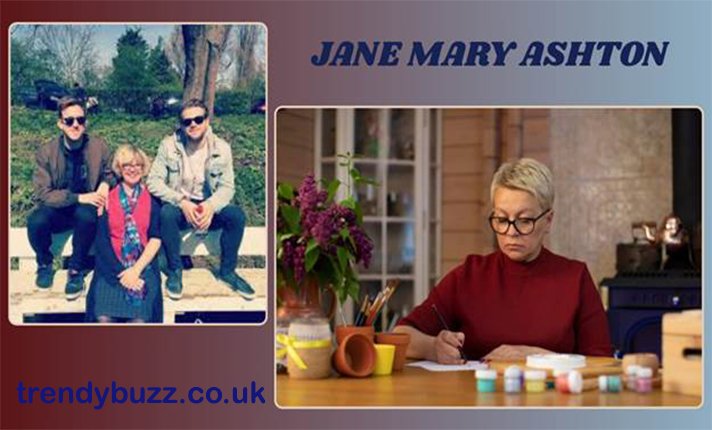Introduction
Jane Mary Ashton is often mentioned in public profiles as the mother of actor Leo Woodall, but that narrow label misses a richer life story. Her background in drama, her steady presence at home, and her quiet engagement with community arts form a consistent portrait: a person who supported creative development through practical encouragement and a protective approach to privacy.
Early life and creative formation
Ashton’s early years, according to available accounts, were shaped by dramatic study and local theatrical involvement. Training in performance taught her discipline and an appreciation for narrative nuance—habits she later brought into family life. Rather than pursuing celebrity or a high-profile career, she appears to have integrated her creative interests into everyday responsibilities, creating a household that valued rehearsal, reading, and imaginative play.
Domestic practice as cultural infrastructure
A striking feature of Ashton’s contribution is how domestic routines functioned as cultural scaffolding. Simple practices—reading aloud at the kitchen table, staging informal performances for friends, and offering space for rehearsals—created steady exposure to the rhythms of performance. Those habits normalize practice in a way that makes the risk of public auditions feel less intimidating for emerging artists.
Mentoring, community, and local theatre
Ashton has been described as an active participant in local theatre communities and as someone who mentored young performers informally. She hosted visitors, shared resources, and introduced aspiring actors to local teachers and opportunities. These quieter forms of mentorship often escape headline attention but are central to sustaining creative networks at the grassroots level.
Parenting that encourages risk
One of the quiet arts of parenting is to make failure an ordinary part of learning. According to those who know the family, Ashton encouraged experimentation rather than perfection, praising effort and curiosity. That approach reduces the fear of failure that can paralyze young artists and replaces it with a safer psychological environment for trying, failing, and trying again.
Practical support: logistics, housing, and access
Beyond emotional encouragement, Ashton provided practical support—holding down a stable home life, managing logistics for travel and rehearsals, and sometimes using resources to secure affordable housing or connections. These mundane but essential actions create the conditions in which creative work can be pursued consistently rather than sporadically.
Privacy and media restraint
Unlike many relatives of public figures who embrace publicity, Ashton is notable for maintaining discretion. She has not sought the spotlight, and this deliberate privacy has shaped the public record: journalists rely on brief profiles and third-party recollections rather than on repeated interviews. That restraint complicates efforts to build a complete biography but also reflects a clear boundary between private life and public career.
Public records and traces
Official documents and public registries provide corroborating traces of Ashton’s residence and civic activities. While these records do not produce a full narrative, they help anchor the more personal recollections and press notes in verifiable facts, such as locations of residence and participation in community groups.
Influence on a next generation
If we look at Leo Woodall’s emergence as an actor, the influence of a drama-friendly household is apparent: early exposure to scripts, games that emphasize improvisation, and a home culture that normalized rehearsal and critique. This kind of upbringing does not guarantee success, but it establishes competencies—confidence, discipline, and familiarity with the mechanics of performance—that materially help an aspiring actor.
The value of modest biographies
Ashton’s life illustrates a broader point: many of the people who shape cultural life do not make headlines. Their labor is modest and embedded in everyday tasks. Scholars and journalists who attend to these modest biographies find that artistic careers are often scaffolded by unglamorous, repetitive acts of support that are essential to long-term achievement.
Respectful reconstruction and limits
Because Ashton has guarded privacy, any public portrait must be careful and respectful. Drawing conclusions about influence and practice should be done through corroborated details and by focusing on observable patterns—household habits, involvement in local arts, and the outcomes evident in family members’ careers—rather than speculation about motives or private choices.
Conclusion
Jane Mary Ashton’s public presence may be quiet, but her impact is tangible when one looks at the environments she helped cultivate. Drama training, everyday encouragement, logistical support, and protective privacy combined to create a space where creative ambition could be explored and practiced. In an era that equates fame with influence, Ashton’s life reminds us that cultural formation often happens away from the cameras, in kitchens, living rooms, and small community theatres—places where patient sure routines that reward repetition and curiosity.
Lessons for parents and communities
There are practical lessons in Ashton’s story for parents, teachers, and local organizers. First, create low-stakes opportunities for practice: small, regular performances, reading circles, and informal workshops. Second, invest in relationships with local tutors and community theatres rather than assuming expensive programs are the only path. Third, model a healthy relationship to media and publicity: teach young people that craft matters more than visibility. Finally, recognize that mentorship can be informal, ongoing, and inexpensive yet deeply consequential.
Why modest support matters
Modest, steady support tends to outlast fleeting opportunities. While scholarships or a single high-profile audition can jumpstart a career, consistent practices—weekly rehearsal, incremental feedback, and the normalizing of early failure—build durable skills. Ashton’s example highlights how a patient environment, rather than dramatic interventions, often produces long-term success.
Closing thoughts
Jane Mary Ashton’s story is an invitation to look beyond headlines. It asks us to value the quieter infrastructures of creativity: the neighbors who host rehearsals, the parents who read aloud, the teachers who give time without fanfare. Those actions weave a subtle network of support that, over time, can allow talent to flourish. By paying attention to these domestic and community practices, we widen our understanding of where culture comes from—and who deserves credit for it. This legacy resonates quietly across many households.
